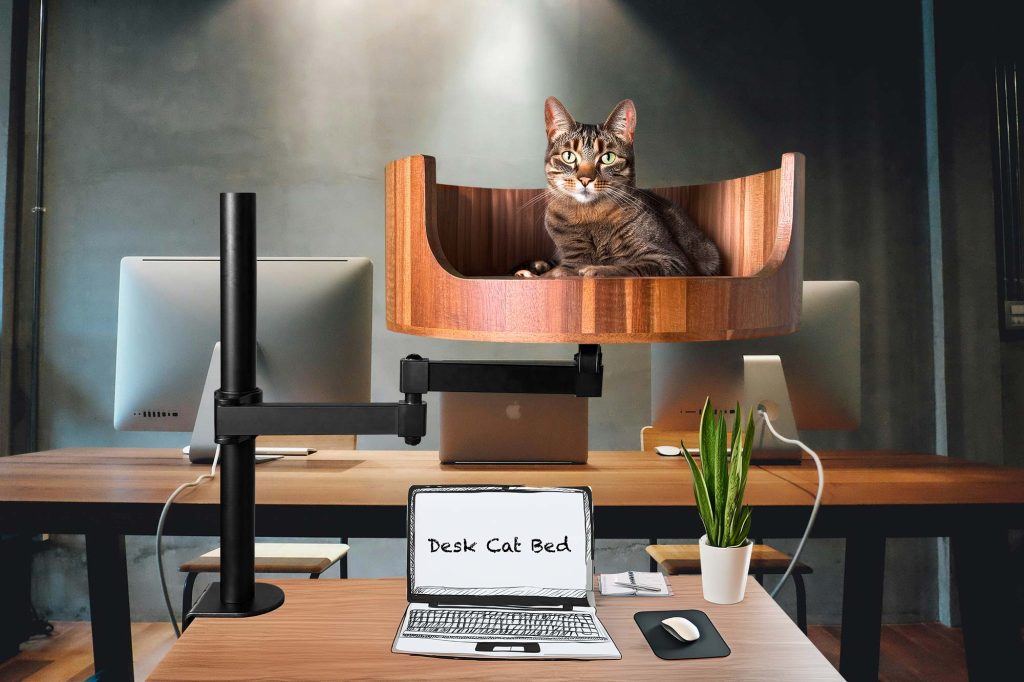If you’ve noticed your feline friend wagging her tail frequently, you might be wondering what’s going on in her little kitty brain. While tail wagging is commonly associated with dogs, cats also use this form of communication to express a variety of emotions and messages. In this article, we’ll delve into the reasons behind your cat’s tail wagging behavior and explore the different meanings it can convey.
From excitement to agitation, a cat’s tail movements can offer insight into their current state of mind. Understanding the reasons behind your cat’s tail wagging can help you better communicate with and care for your beloved pet. In addition to deciphering the meaning behind different types of tail wagging, we’ll also cover tips on how to interpret your cat’s body language and respond appropriately to ensure a harmonious relationship between you and your furry companion. So, next time you catch your cat’s tail twitching or swishing, you’ll have a better understanding of what she might be trying to tell you.
1. Cat tail wagging can be a sign of stress, agitation, or excitement.
2. Understanding your cat’s body language is crucial for interpreting tail movements accurately.
3. Tail flicking can indicate discomfort or annoyance, while rapid wagging may signify playfulness.
4. Tail behavior should be considered alongside other cues such as vocalizations and posture to determine your cat’s mood.
5. It’s important to pay attention to your cat’s tail movements to ensure their needs are being met and to maintain a strong bond with your feline companion.
Understanding Cat Tail Wagging
Cat tail wagging is a common behavior and can indicate a variety of emotions, including excitement, aggression, or fear. Pay attention to your cat’s body language and the context in which the tail wagging occurs to better understand what your cat is feeling.
Possibility of Health Issues
Excessive tail wagging in cats could be a sign of physical discomfort or pain. It’s important to monitor your cat for other symptoms such as changes in appetite, grooming habits, or bathroom behavior. If you suspect that your cat’s tail wagging is a result of a health issue, consult with your veterinarian for a proper diagnosis and treatment.
Stress or Anxiety Triggers
Stressful situations or changes in the environment can cause cats to wag their tails more frequently. Common stressors for cats include moving to a new home, the addition of a new pet or family member, or loud noises. Providing a safe and comfortable environment for your cat, along with interactive toys and plenty of opportunities for mental stimulation, can help reduce stress and anxiety levels.
Behavioral Issues
Some cats may wag their tails excessively as a behavioral issue, such as overstimulation or a lack of socialization. It’s important to observe your cat’s behavior and provide appropriate outlets for play, exercise, and interaction. Consult with a professional animal behaviorist for guidance on addressing any underlying behavioral issues that may be causing your cat to wag her tail excessively.
Desk Cat Nest FAQ
Why is my cat wagging her tail so much?
There are several reasons why your cat may be wagging her tail excessively. It could be a sign of excitement, agitation, or even a health issue. Observing other body language cues and seeking advice from a veterinarian may help determine the cause.
Will the Desk Cat Nest help with my cat’s tail wagging?
The Desk Cat Nest provides a cozy and safe space for your cat to relax and feel secure, which may help reduce stress and anxiety that could be causing the tail wagging. However, it is always recommended to address any underlying issues with your cat’s behavior.
Can the Desk Cat Nest be used as a solution for behavioral problems in cats?
While the Desk Cat Nest can provide a comfortable environment for your cat, it is not a guaranteed solution for all behavioral problems. It is best to consult with a professional, such as a veterinarian or animal behaviorist, for personalized advice on addressing specific issues.
How should I introduce my cat to the Desk Cat Nest?
It is important to allow your cat to explore the Desk Cat Nest at their own pace. Placing familiar bedding or toys inside and using treats to encourage your cat to investigate can help make the introduction smoother. Patience and positive reinforcement are key.
In conclusion, providing your cat with a comfortable and secure space, such as the Desk Cat Bed, can help alleviate stress and reduce excessive tail wagging. This innovative product offers a cozy and private sanctuary for your feline friend, allowing them to unwind and relax in peace. With its plush materials and spacious design, the Desk Cat Bed promotes a sense of security and calmness, ultimately leading to a happier and more content cat. Make the valuable choice to invest in the Desk Cat Bed today and experience the benefits of a peaceful and tail-wagging-free environment for your beloved pet.


